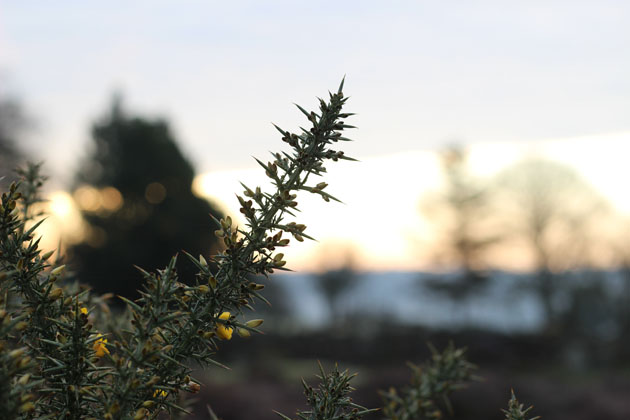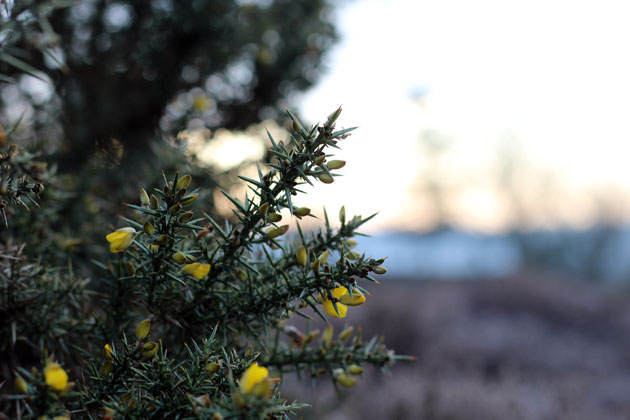Whinbusks in bud

I walked up onto the moor yesterday morning, there had been a hard frost overnight covering the ground dusty white. Through the cold came the birdsong and the gleam of the rising sun and I felt the push of spring despite the chill.
Once on the moor path along Lastingham Ridge, I’m aware of something in the air and the light, some sparkling purity, a rejuvenating quality. My marching pace eases and my mind slows.

The Gorse prickles with frost. Gorse here is known as Whin or Furze. The bushes, Whinbusks. As I get closer I notice that there are buds on the stems and in places they’ve burst into bright, golden yellow flower. Whin-blossom.
If it is hot during the summer you can hear the shrub clicking and popping, which is the seedpods exploding as the temperature rises, casting wide the little seeds inside. This resilient plant, despite its prickles, is well-liked by birds, Whinchats (even named after the bush), Stonechats, and Linnets, its density protecting their nests. Foxes also take advantage of its protective growth, whin patches on the moors are known fox hiding places. It was used for animal fodder too, collected and then crushed using great stone rollers, to make the prickly spines more easily eaten.
Another and rather special influence of Gorse and a result of it as a long-time feature in the North York Moors is that locally there is a quarry producing a tough sandstone that has the name Whinstone! (In the quarrying industry Whinstone is a term used for any hard, resistant, dark-coloured rock).

